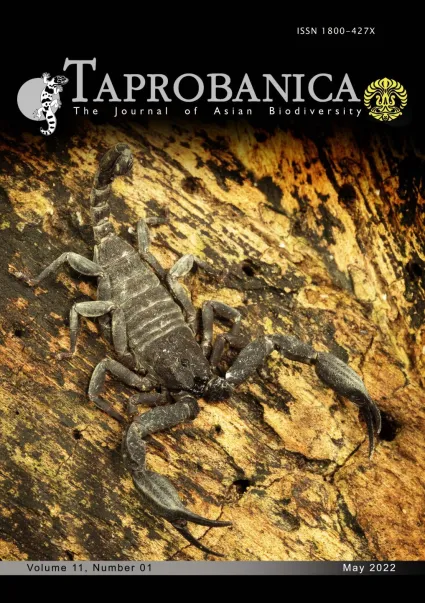

v11i1.281
Volume 11 | Number 1 | May 2022
Short Note
ISSN: 1800-427X (printed)
eISSN: 1800-427X (online)
DOI:10.47605/tapro.v11i1.281
Submitted date: 23 November 2021
Accepted date: 21 March 2022
Published date: 23 May 2022
Pp. 45–46, Pl. 14.
Diet of the Indian fox (Vulpes bengalensis) in dry scrubland of north Gujarat, India
P. Desai* & N. Dharaiya
*Corresponding author. E-mail: pratikdesai825@gmail.com
Indian fox Vulpes bengalensis, a mesocarnivore of the Indian subcontinent, is distributed widely in all kinds of habitats in India except the Western Ghats. The Indian fox prefers semi-arid landscapes with low rainfall where it is easy to hunt and dig dens and where the vegetation is mainly short grasslands or scrub, thorn thickets or dry deciduous forests. They mostly avoid dense forests, steep terrain, tall grasslands, and true deserts. The Indian fox is listed as of Least Concern (LC) by the IUCN and legally protected in India under schedule II of the Indian Wildlife Protection Act 1972. An opportunistic and omnivorous feeder, its diet includes insects, scorpions, centipedes, small rodents, monitor lizards and other reptiles, ground nesting birds, their eggs and fruit such as Ziziphus sp. (Rhamnaceae), Citrullus vulgaris (Cucurbitaceae), Azadirachta indica (Meliaceae), Mangifera indica (Anacardiaceae), Syzigium cumini (Myrtaceae), Melia azedarach (Meliaceae), and Ficus bengalensis (Moraceae). Some local shepherds have also reported seeing Indian foxes feed on the freshly voided pellets of sheep. Their presence and density in any area is closely related to the abundance of food.
Section Editor: Lee Harding
eISSN: 1800-427X (online)
DOI:10.47605/tapro.v11i1.281
Submitted date: 23 November 2021
Accepted date: 21 March 2022
Published date: 23 May 2022
Pp. 45–46, Pl. 14.
Diet of the Indian fox (Vulpes bengalensis) in dry scrubland of north Gujarat, India
P. Desai* & N. Dharaiya
*Corresponding author. E-mail: pratikdesai825@gmail.com
Indian fox Vulpes bengalensis, a mesocarnivore of the Indian subcontinent, is distributed widely in all kinds of habitats in India except the Western Ghats. The Indian fox prefers semi-arid landscapes with low rainfall where it is easy to hunt and dig dens and where the vegetation is mainly short grasslands or scrub, thorn thickets or dry deciduous forests. They mostly avoid dense forests, steep terrain, tall grasslands, and true deserts. The Indian fox is listed as of Least Concern (LC) by the IUCN and legally protected in India under schedule II of the Indian Wildlife Protection Act 1972. An opportunistic and omnivorous feeder, its diet includes insects, scorpions, centipedes, small rodents, monitor lizards and other reptiles, ground nesting birds, their eggs and fruit such as Ziziphus sp. (Rhamnaceae), Citrullus vulgaris (Cucurbitaceae), Azadirachta indica (Meliaceae), Mangifera indica (Anacardiaceae), Syzigium cumini (Myrtaceae), Melia azedarach (Meliaceae), and Ficus bengalensis (Moraceae). Some local shepherds have also reported seeing Indian foxes feed on the freshly voided pellets of sheep. Their presence and density in any area is closely related to the abundance of food.
Section Editor: Lee Harding
- List of Articles & Contents





